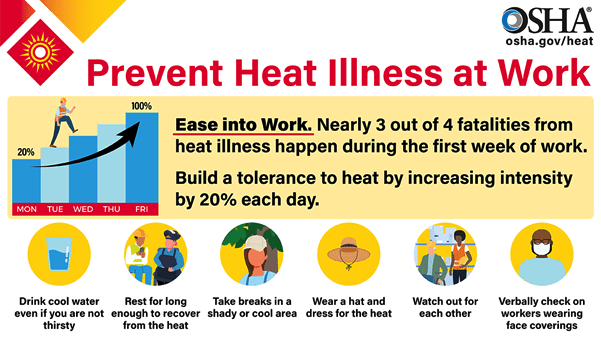NAHB Issues Heat Stress Safety Toolkit
Kit contains tips to prevent and treat heat stress injuries and heat stroke.

Exposure to excessive heat can cause injury or death, a fact home builders know all too well. NAHB has created a Heat Stress Safety Toolkit to help home builders mitigate the risks and exposure to heat on the jobsite.
When working in a hot environment, especially when physically active, the human body relies on heat dissipation (getting rid of excess heat) to maintain a healthy internal body temperature. Heat dissipation happens naturally through sweating and increased blood flow to the skin. Workers cool down more rapidly when external temperature and physical activity are reduced.
Workers whose jobs require them to be outside should be prepared to take precautions to protect against possible heat related illnesses and/or injuries. Individual workers react to heat based on their own individual characteristics and multiple factors such as environmental conditions (temperature, wind, sun, and humidity), acclimation to working in warmer conditions, their own personal health and the extent of their physical activity.
Employers and workers should have plans in place to provide access to plenty of water, take adequate breaks when needed, as well as access to shade or cool-down areas. Employers and workers should also consider shifting work schedules to times of day when temperatures are lower, such as early morning to mid-day.
Above all, everyone on a jobsite should know the tell-tale signs of heat stroke, the most serious heat illness:
- Confusion, disorientation, slurred speech, unable to think clearly, collapse, unconsciousness, or potential seizures.
- No sweating.
If a worker is experiencing heat stroke, cool them down immediately and call 911.
For more resources, visit the Heat Stress Safety Toolkit on nahb.org.
















